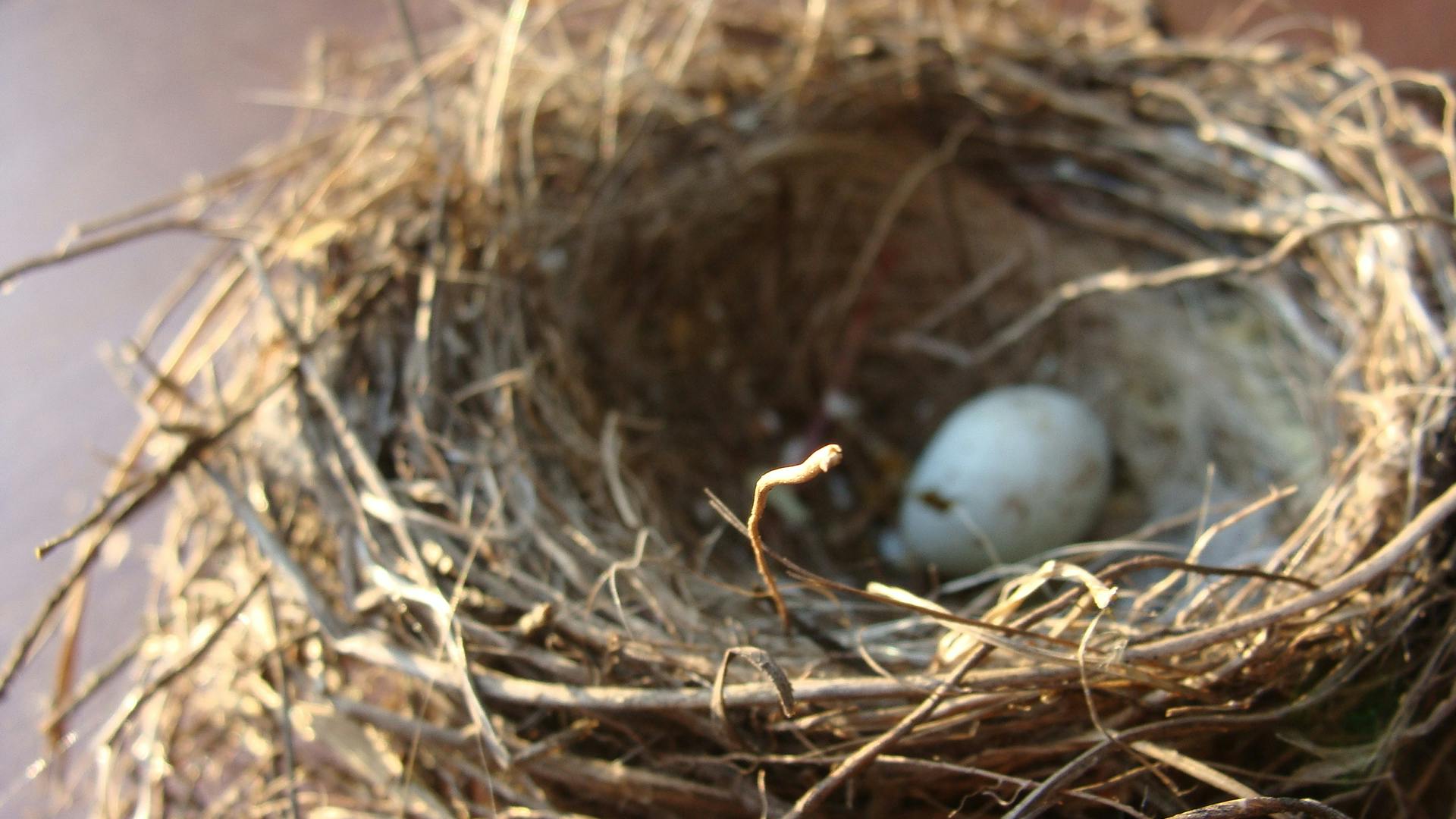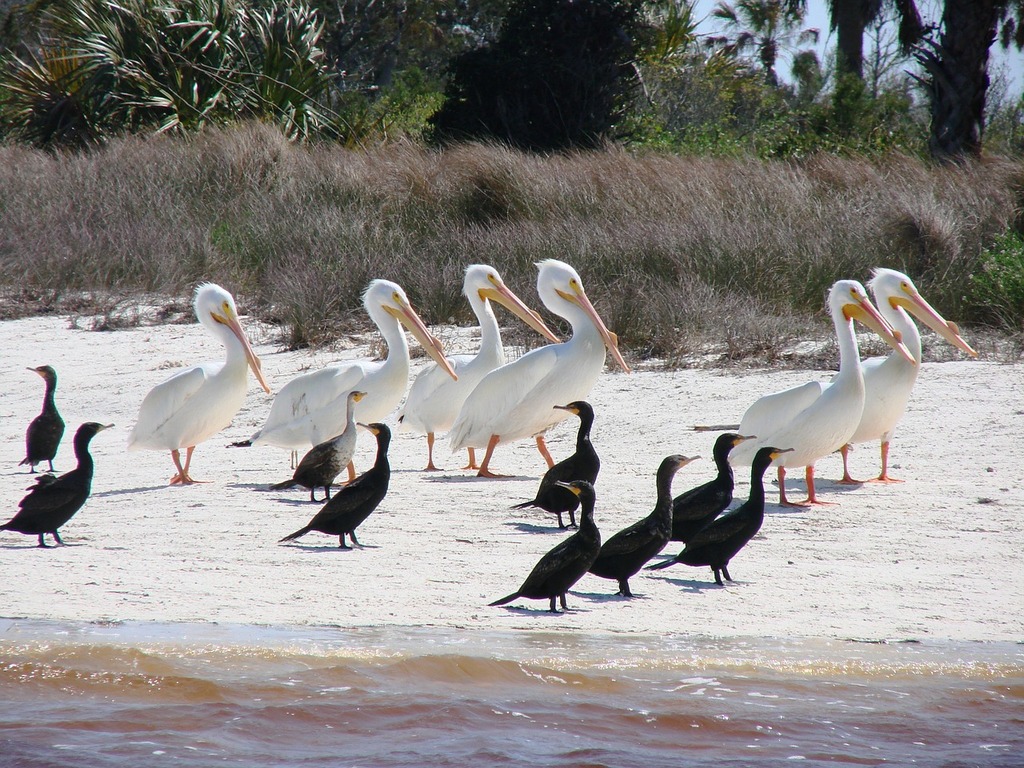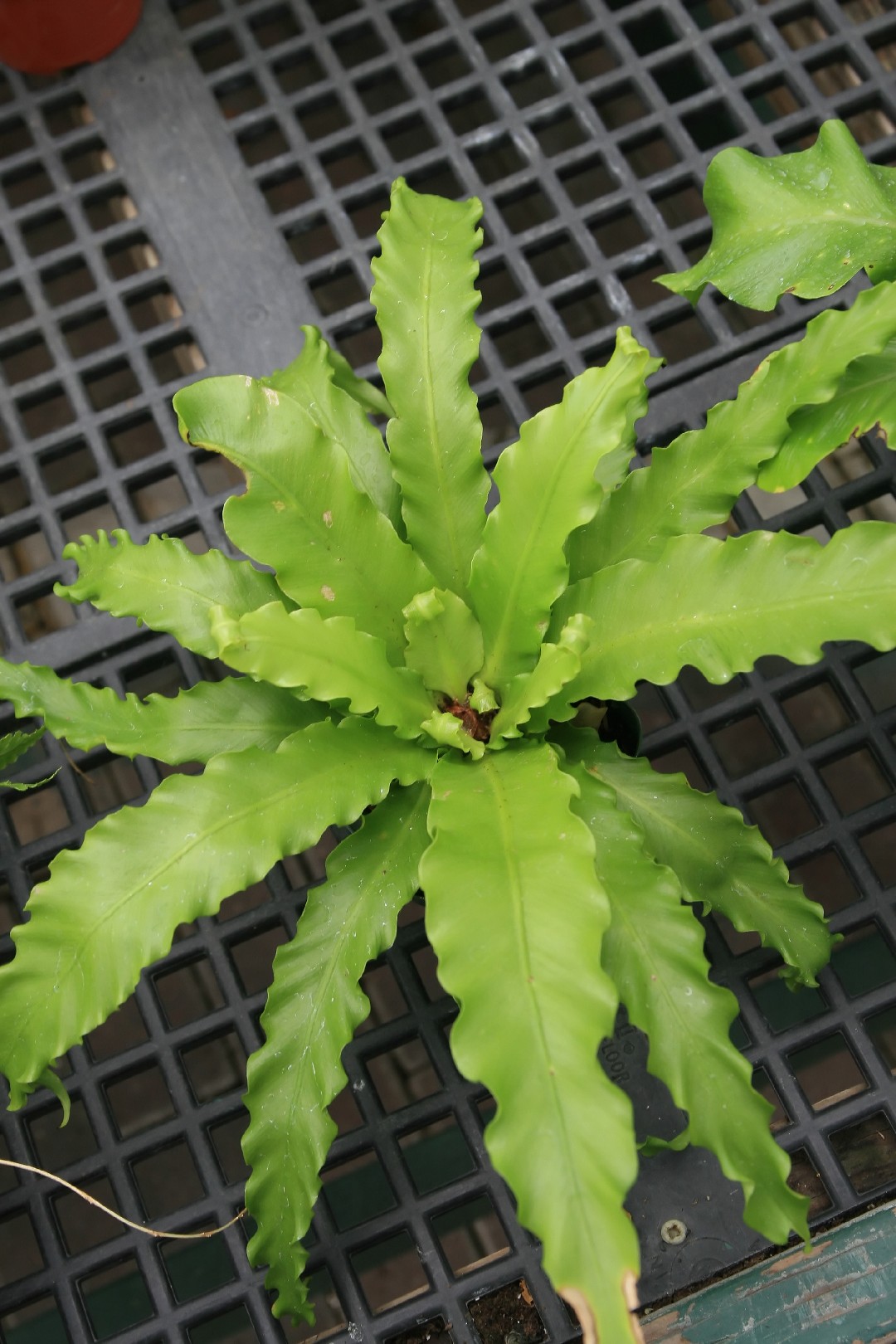Introduction

Moving a bird nest with eggs is a delicate task that requires careful planning and consideration. This article explores the importance of relocating bird nests and provides step-by-step guidance to ensure the well-being of the birds and their eggs.
Birds and their nests captivate us with their beauty and the marvel of their creation. As humans, we have a responsibility to protect and preserve these fragile creatures and their offspring. However, there are situations where human intervention becomes necessary to ensure their safety.
The significance of moving a bird nest with eggs lies in striking a balance between the well-being of the birds and practical human needs. Nests constructed in unsafe locations, such as near busy roads or in disaster-prone areas, require relocation to prevent harm to the birds and their eggs.
Additionally, construction projects or renovations may pose a threat to existing bird nests. Relocating nests not only mitigates potential harm but also plays a vital role in conservation efforts. Many bird species face habitat loss and challenges, making their nests vulnerable to destruction. By safely moving nests, we protect these species and contribute to their survival.
It’s important to note that the relocation of bird nests may be subject to legal regulations. Familiarize yourself with the specific requirements in your area to act within the appropriate legal framework.
Throughout this article, we provide detailed instructions on assessing the situation, preparing for the move, executing the relocation, and ensuring the safety of the nest and eggs in their new location. By following these guidelines, you can safeguard the welfare of birds and contribute to their long-term conservation.
Assessing the Situation
When relocating a bird nest with eggs, carefully assess the situation by identifying the bird species, evaluating nest safety, and finding a suitable relocation spot.
Identify the type of bird

Observe physical characteristics and behavior to identify the bird species. Size, coloration, beak shape, and markings are valuable clues. Use bird identification guides or online resources for reference.
Determine nest and egg safety
Evaluate the stability of the nest structure and assess the risk of falling. Consider the nest’s location and exposure to predators or environmental hazards. Inspect for signs of disturbance or damage that may compromise egg safety.
Identify a suitable relocation spot
Find an area resembling the original nesting location in terms of vegetation, height, and surroundings. Ensure protection from predators and environmental elements. Consider accessibility and minimize human activity to reduce interference.
Comply with regulations and seek advice from local wildlife authorities or bird rehabilitation centers when dealing with protected nests. Assess the situation, identify the bird species, evaluate nest safety, and choose a suitable relocation spot to proceed confidently to the next step: preparing for the move.
Preparing for the Move

Gather the necessary tools and supplies

Before moving a bird nest with eggs, gather the following tools and supplies:
- Gloves: Protect your hands and minimize human scent on the nest.
- Container: Find a suitable box or basket to transport the nest and eggs comfortably.
- Soft lining material: Prepare grass, leaves, or fabric to cushion the nest and protect the fragile eggs.
- Tissue or paper towels: Keep them handy to clean any debris or dirt from the nest, if necessary.
- Scissors or pruning shears: Trim branches or vegetation that may obstruct the relocation process.
- Masking tape or string: Secure the nest in the container to prevent shifting during transportation.
- Marking pen or label: Clearly mark the container with information about the bird species, date, and location of the original nest.
Learn the proper technique for moving a nest with eggs
Moving a bird nest with eggs requires careful technique and consideration. Follow these steps:
- Assess the situation: Determine if it is necessary to move the nest, considering the potential threat or if relocation is essential.
- Consult local regulations: Check for any legal restrictions or permits required in your area to ensure the well-being of the birds and their nests.
- Timing is crucial: Move the nest during the incubation period, avoiding the hatching period to prevent harm to the eggs.
- Minimize human scent: Reduce your presence and scent to minimize stress on the birds and increase relocation success.
- Handle the nest with care: Hold the nest from underneath with both hands to provide support, avoiding excessive shaking or jostling.
- Keep the nest level: Ensure the nest remains level during transportation to prevent the eggs from rolling or shifting.
- Maintain a quiet environment: Create a calm and quiet environment during the move to minimize stress on the birds.
Set up the area for the nest relocation

Consider the following factors when choosing a new location for the nest:
- Safety and suitability: Select an area with similar environmental conditions to the original nest, providing shelter, food sources, and protection from predators.
- Height and stability: Choose a location with the same height as the original nest and ensure stability to securely hold the nest.
- Accessibility: Pick a spot where the relocated nest can be easily monitored and maintained for the safety of the birds.
- Privacy and minimal disturbance: Select a quiet location away from heavy human traffic or potential disturbances.
- Camouflage and concealment: Position the nest to blend with the surrounding environment, providing natural camouflage and protection.
By following these preparations and techniques, you can increase the chances of successfully moving a bird nest with eggs and ensuring the well-being of the birds during the relocation process.
Moving the Nest

Moving a bird nest with eggs requires careful consideration and gentle handling to ensure the safety of both the nest and its precious contents. This section provides guidance on choosing the optimal time for the move, as well as step-by-step instructions for a successful relocation. Additionally, it offers tips on securely placing the nest in its new location.
Choose the Optimal Time of Day
Timing is crucial when moving a bird nest. Opt for the early morning hours when birds are most active and alert, as this can minimize stress and increase the chances of successful adaptation to the new location. Be mindful of extreme weather conditions such as heavy rain, strong winds, and high temperatures, which can pose risks to the nest and its occupants. Wait for a calm and stable day to ensure the best possible conditions for the move.
Carefully and Gently Move the Nest and Eggs
To ensure a safe and successful relocation, follow these steps:
-
Wear gloves: Minimize the transfer of human scent to the nest by wearing gloves during the process.
-
Assess nest stability: Check the nest’s construction before moving it. If the nest is loosely built, place a shallow container or basket beneath it for added support during the move.
-
Gentle lifting: Using a soft cloth or padding, carefully lift the nest while keeping the eggs undisturbed. Avoid tilting, shaking, or any sudden movements that could harm the eggs or cause the parent birds to abandon the nest.
-
Detach if necessary: If the nest is attached to a branch or structure, detach it carefully without causing harm to the nest or eggs.
-
Maintain stability: Throughout the relocation process, keep the nest level and stable to prevent the eggs from shifting or rolling within the nest, ensuring their continued safety.
Securely Place the Nest in the New Location

Properly positioning the nest in its new surroundings is crucial for the birds’ well-being. Follow these guidelines:
-
Choose a suitable location: Select a spot that provides safety, shelter, and available resources similar to the original nesting site. Ensure the new location is away from potential disturbances such as heavy foot traffic, pets, or loud noises.
-
Consider height and orientation: Whenever possible, position the nest at a similar height and orientation as it was in its original location. This familiarity can help the birds adapt more easily to their new surroundings.
By following these steps, you can ensure a smooth and safe transition for the bird nest and eggs. The next section will cover the final steps of the relocation process, including monitoring the nest for signs of distress and providing appropriate care for the birds.
Word count: 311 words
Finalizing the Move

Congratulations on successfully relocating the bird nest! However, your work is not done just yet. To ensure the well-being of the birds and their eggs, it’s important to take a few more steps.
Monitor the Nest for Distress

After moving the nest, keep a close eye on it and observe the behavior of the adult birds. Signs of distress, such as increased vocalization, agitation, or attempts to abandon the nest, may indicate that the move has been too disruptive or stressful for them. If you notice these behaviors, consider whether the new location is suitable. Returning the nest to its original spot may be the best course of action if circumstances allow.
Also, pay attention to the eggs. Look for any damage or changes in appearance, like cracks or discoloration, which may have occurred during the move. If you notice any noticeable damage, seek guidance from a local wildlife rehabilitator.
Provide Appropriate Food and Water
To support the birds’ well-being, ensure they have access to suitable food and water. Research the specific dietary needs of the bird species and provide appropriate food sources accordingly. Some birds prefer seeds, while others may require insects or nectar. By catering to their nutritional needs, you can help them thrive.
Place a shallow dish or container of fresh water near the relocated nest to keep the adult birds hydrated. Remember to replenish the water regularly to maintain its freshness.
Ensure Nest and Egg Safety
Creating a safe environment in the new location is crucial for the nest and eggs to survive. Choose a secure spot that closely mimics the original environment, considering factors like light, temperature, and protection from predators. Avoid exposing the nest to excessive elements like wind or direct sunlight. If needed, use a cage or wire mesh to provide additional protection against predators.
While it’s important to monitor the nest, minimize handling of the eggs. Excessive movement or touching can be detrimental to their development. Your goal is to create a safe and stable environment that allows the eggs to develop naturally.
By closely monitoring the nest, providing adequate food and water, and ensuring the safety of the nest and eggs, you give the relocated bird family the best chance to thrive in their new environment.
Word count: 307 words
Conclusion

In this blog post, we have explored the delicate situation of moving a bird nest with eggs. It is crucial to remember that interfering with bird nests should be a last resort and done only if absolutely necessary.
Recap of Key Points
Throughout the article, we covered essential points to consider when moving a bird nest:
-
Identifying the Need: Understand reasons for moving a bird nest, such as construction or safety concerns. Obtain permits or professional advice in such cases.
-
Assessing the Situation: Identify the bird species, evaluate nest safety, and determine a suitable relocation spot. Consideration of these factors ensures the birds’ well-being.
-
Preparing for the Move: Gather necessary tools and supplies, learn proper techniques, and set up the relocation area. Preparation is key to a successful and safe transfer.
-
Moving the Nest: Choose the optimal time of day, handle the nest and eggs gently, and securely place the nest in the new location. Following these steps minimizes stress and maximizes adaptation.
-
Finalizing the Move: Monitor the nest for distress, provide food and water, and ensure safety. Ongoing care is crucial after the move.
Advice for Properly Moving a Bird Nest with Eggs
If necessary, follow these tips:
-
Seek Professional Guidance: Consult local wildlife authorities or bird experts to ensure you follow appropriate guidelines and legal requirements.
-
Timing is Crucial: Move the nest during the nest-building stage or before the eggs hatch. This minimizes risk and stress.
-
Handle with Care: Be gentle and cautious to avoid damaging the eggs or nest structure. Maintain the nest’s original position and orientation.
-
Ensure a Safe Relocation: Choose a suitable location with similar environmental conditions. Consider shelter, food availability, and protection from predators.
-
Monitor and Provide Care: Keep an eye on the relocated nest for signs of distress. Provide nearby food and water during the transition.
Remember, moving a bird nest with eggs should always be a last resort. Prioritize the preservation of natural habitats and consult professionals before taking action. By respecting and protecting bird nests, we contribute to the conservation of these remarkable creatures and their fragile ecosystems.
Frequently Asked Questions
Frequently Asked Questions
Can I legally move a bird nest with eggs?

Yes, the legality of moving a bird nest with eggs depends on the specific regulations in your area. It is important to familiarize yourself with local wildlife laws and seek advice from wildlife authorities or bird rehabilitation centers to ensure compliance with the appropriate legal framework.
When is the best time to move a bird nest with eggs?
The best time to move a bird nest with eggs is during the nest-building stage or before the eggs hatch. Moving the nest during this period minimizes the risk of harm to the eggs and reduces stress on the parent birds.
How can I identify the type of bird nesting in the nest?
To identify the type of bird nesting in a nest, you can observe physical characteristics and behavior. Pay attention to the bird’s size, coloration, beak shape, and markings. Bird identification guides and online resources can be valuable references for identifying bird species.
What should I do if I notice distress in the birds after moving the nest?
If you notice signs of distress in the birds after moving the nest, such as increased vocalization, agitation, or attempts to abandon the nest, consider whether the new location is suitable. Returning the nest to its original spot may be the best course of action if circumstances allow. If you are unsure, seek guidance from a local wildlife rehabilitator.
How can I ensure the safety of the nest and eggs in the new location?
To ensure the safety of the nest and eggs in the new location, choose a secure spot that closely mimics the original environment. Consider factors such as shelter, food availability, and protection from predators. Avoid exposing the nest to excessive elements like wind or direct sunlight. Monitoring the nest for distress and providing appropriate care, such as food and water, will also contribute to the well-being of the birds and their eggs.


Leave a Reply